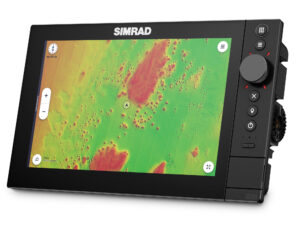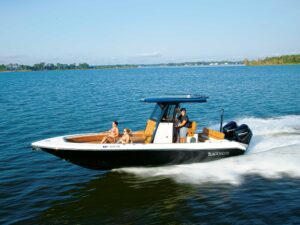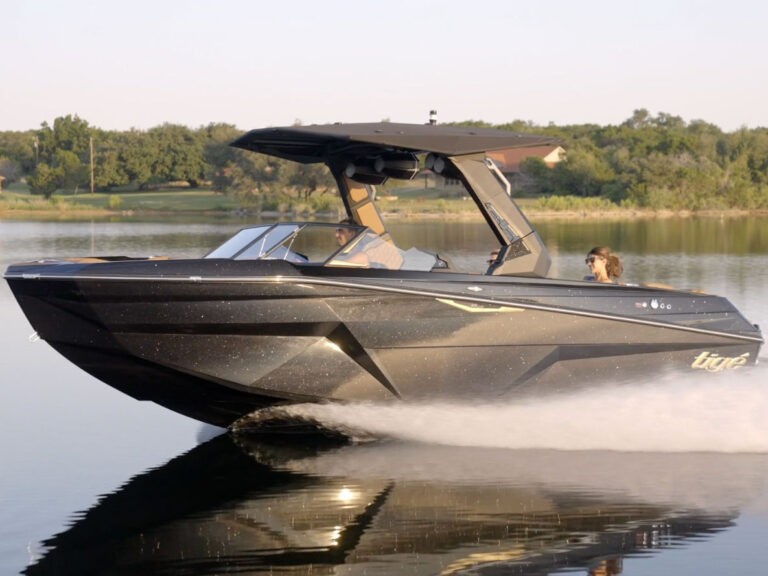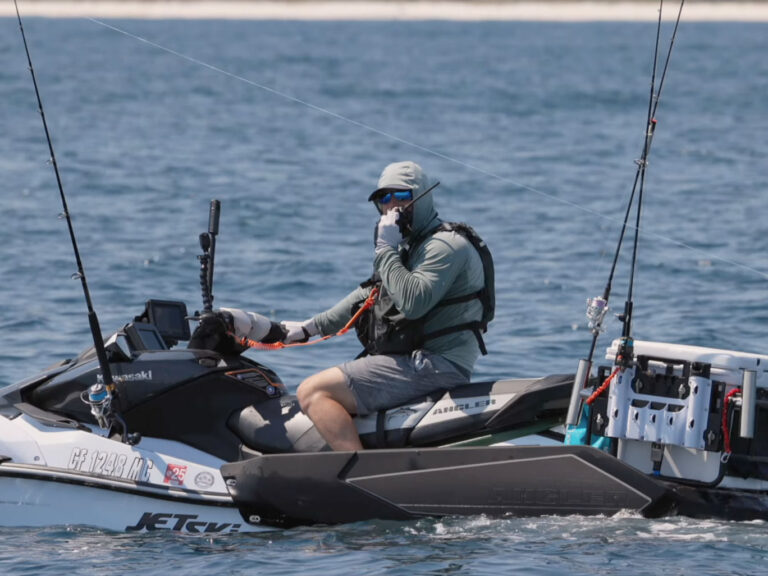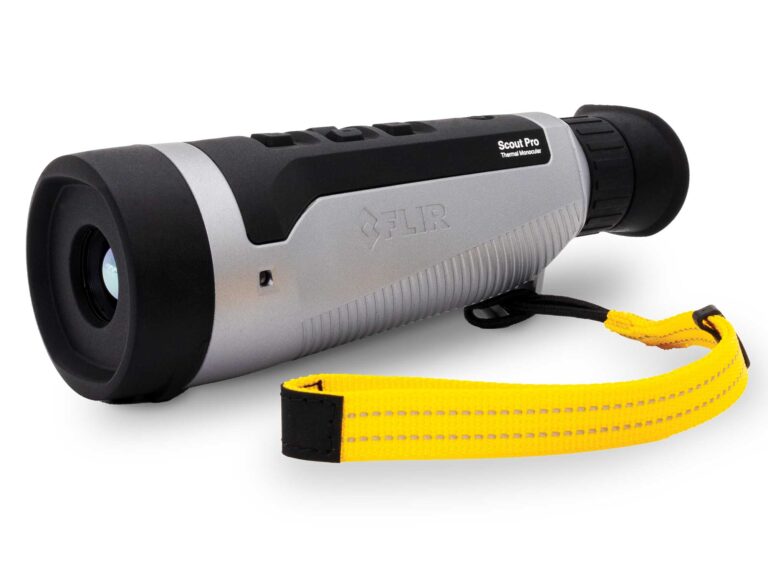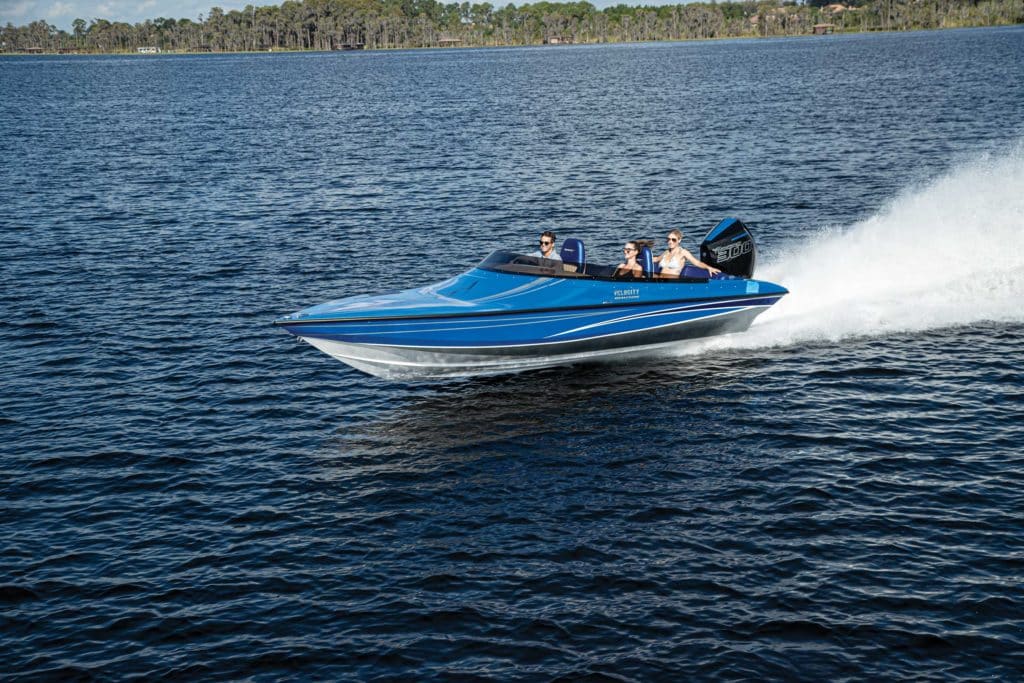
Overview
With an arrowlike closed bow, low-profile smoked Lexan windscreen, go-fast painted graphics, and a Mercury Racing 300R outboard bolted to the transom, the Velocity 230 SC looks fast—even before it leaves the trailer, as the saying goes.
Engine
The 230 SC hit a top speed of 77.8 mph during our testing, before the pucker factor prevented me from adding in more trim, lift and throttle to the Mercury Racing 300 R outboard. In different water conditions, and with an experienced person at the helm, particularly one with time aboard the 230 SC, reliable sources peg that number as closer to 82 mph. I buy that completely. If you’ve got the goods, the 230 SC is one speedy, eye-catching ride.
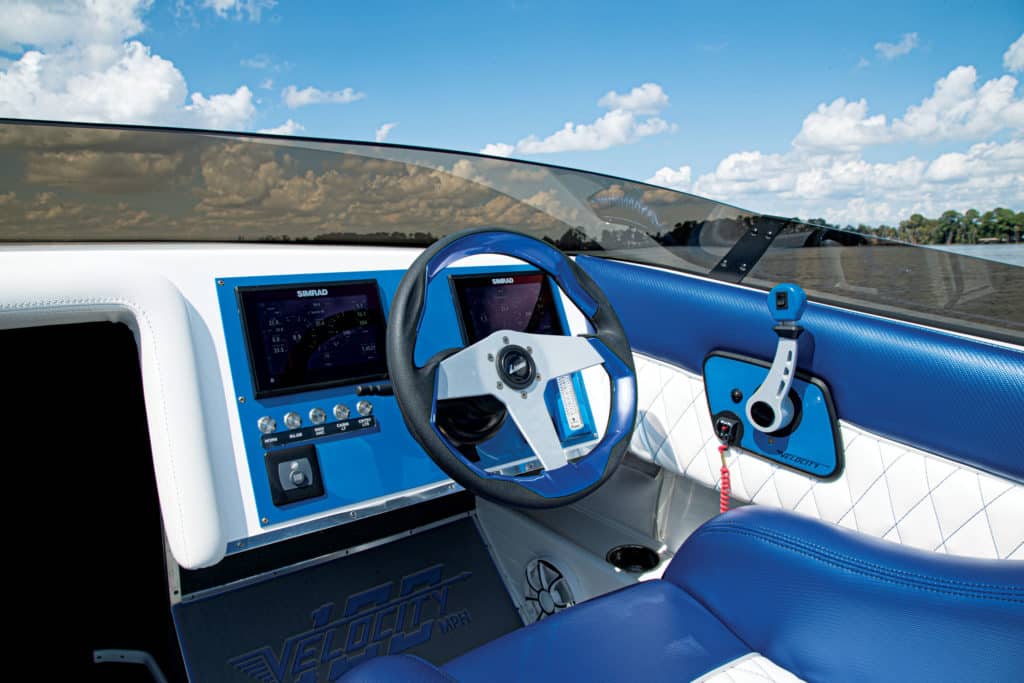
With a steep 31-inch-pitch prop, our test boat might not have exactly leapt out of the hole, but once on plane, it took off like a rocket, with precious little of the hull touching the water at speed.
It also excelled in the turns. Though that hull may be seemingly designed for straight-ahead speed runs, it handles the corners with both aggression and confidence, tracking precisely without once losing its bite.
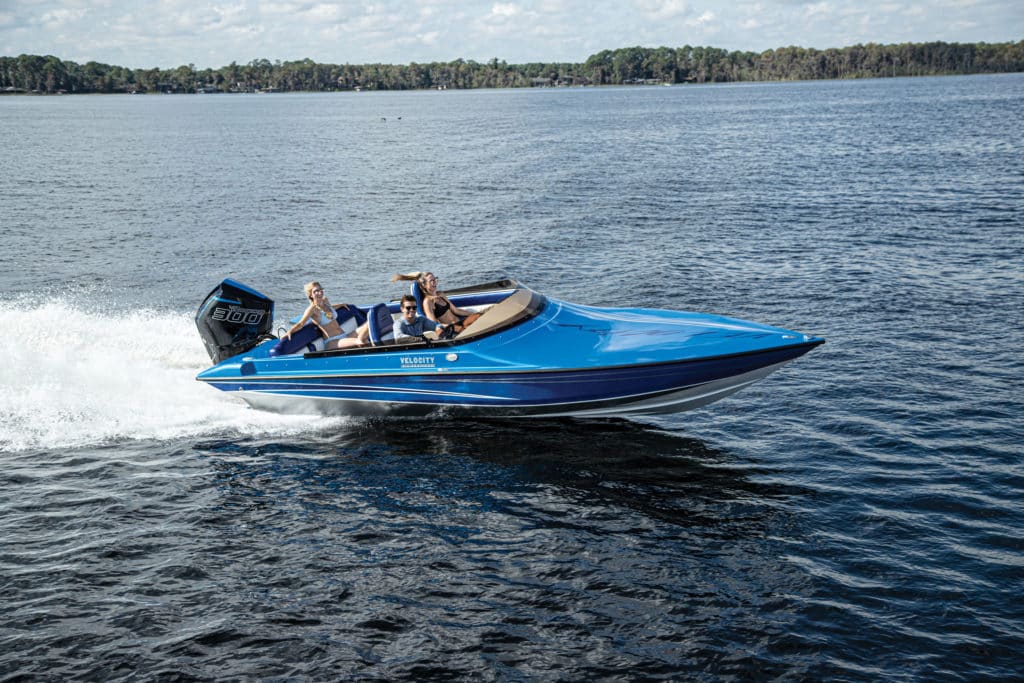
Design
Like a number of Velocity models, the 230 SC is based off a hull design that has laid claim to multiple speed records over the years. It features a deep, knifelike entry, a notched transom to reduce bow rise, and a pad bottom that generates lift, reducing fuel consumption and smoothing the ride.

Interior and Accessories
Though performance is the obvious selling point, Velocity doesn’t overlook creature comforts, nor the target buyer’s demand for a high level of trim. Dual high-back helm seats feature stylish fiberglass surrounds molded in-house. On our test boat, they were paired with two-tone, metallic-looking vinyl featuring plenty of attractive, diamond-pattern accent stitching. The primary hull color is carried throughout, showing up as an accent color on the Livorsi wheel, throttle and tab-indicator housing, grab handles, dash, and standard SeaDek cockpit flooring. Accommodations include a 7-foot-4-inch-deep V-berth under the bow and 5-foot-8-inch-wide individually-bolstered three-passenger aft bench.

How We Tested
- Engine: Mercury Racing 300
- Drive/Prop: Outboard/Mercury Bravo 1 FS 15.25″ x 31″ 4-blade stainless steel
- Gear Ratio: 1.75:1 Fuel Load: 45 gal. Crew Weight: 360 lb.
High Points
- Construction features include a high-density, linear core for the transom, stringers, bulkheads and floor; lightweight infusion construction; quad-axial fiberglass; and vinylester resin.
- Features include standard hydraulic steering, a Wet Sounds stereo system, battery with beefy offshore mounts, Mercury VesselView display, and a four-blade, stainless-steel lab-finished prop.
- Cabin includes V-berth bed cushion, hideaway portable marine toilet, and interior lighting
Low Points
- Speaker-mounting screws protruded into underbench storage and were simply dabbed in caulk, and upholstery staples weren’t always covered in trim. Velocity says all will be addressed.
- Exposed fasteners slightly detract from the otherwise attractive, color-matched dash panel.
Toughest Competitor
Look at Checkmate’s Pulsare 2400 (suggested retail price of $105,009 nicely equipped with Mercury Racing 300R).
Pricing and Specs
| Price: | $130,336 (with 300 hp test power) |
|---|---|
| LOA: | 22′11″ |
| Beam: | 8′0″ |
| Draft (max): | 1′5″ |
| Displacement: | 3,100 lb. |
| Transom Deadrise: | 22 degrees |
| Bridge Clearance: | 3′8″ |
| Fuel Capacity: | 50 gal. |
| Max Horsepower: | 400 |
| Available Power: | Single gasoline outboards to 300 hp, twin outboards to 200 hp |
Speed, Efficiency, Operation

Velocity Powerboats – Sanford, Florida; 877-345-1159; velocityboats.com

